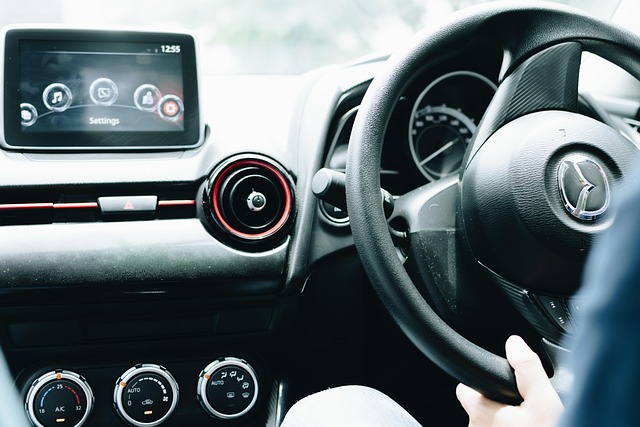In the rapidly evolving landscape of industrial automation, the integration of intelligent systems into robotic platforms has become a cornerstone for businesses seeking competitive advantage. These systems, built upon advanced artificial intelligence algorithms, sensor fusion, and real‑time data analytics, empower robots to perform complex tasks with precision, adaptability, and autonomy. As organizations continue to embrace digital transformation, understanding how intelligent systems enhance control mechanisms in robotics is essential for engineers, managers, and strategists alike.
Defining Intelligent Systems in the Context of Robotics
Intelligent systems refer to computational frameworks that combine machine learning, decision theory, and perception technologies to mimic or surpass human reasoning in specific domains. Within robotics, they manifest as layers that interpret sensor data, generate motion plans, and adjust actions on the fly. This triad—perception, cognition, and action—creates a closed loop that allows robots to navigate dynamic environments, manipulate objects with dexterity, and collaborate safely with human workers.
Key attributes of these systems include:
- Autonomous Decision‑Making: Robots evaluate their surroundings and choose optimal actions without human intervention.
- Continuous Learning: Models refine themselves over time, improving performance on repetitive or novel tasks.
- Robust Sensing: Integration of vision, lidar, force sensors, and inertial measurement units to construct a reliable perception of the world.
Core Components of Intelligent Systems in Industrial Robotics
The effectiveness of an intelligent robotic platform hinges on the seamless collaboration of several subsystems. Each component plays a distinct role in delivering real‑time, high‑precision control.
Perception Module
Vision and sensor fusion technologies convert raw data into actionable information. Convolutional neural networks identify objects, while depth sensors measure distances. Together, they provide the robot with a 3‑D map of its workspace.
Planning and Motion Generation
Once the environment is understood, path‑planning algorithms—such as Rapidly‑Exploring Random Trees (RRT) or Model Predictive Control (MPC)—compute safe trajectories. These planners respect kinematic constraints and avoid collisions while optimizing speed and energy consumption.
Execution and Closed‑Loop Control
Low‑level controllers, often PID or adaptive schemes, execute the planned motions. Real‑time feedback from joint encoders and force sensors ensures the robot stays on track, correcting deviations caused by disturbances or model inaccuracies.
Learning and Adaptation Layer
Machine learning models continuously update their internal representations based on new data. Reinforcement learning agents, for instance, learn reward‑driven behaviors that improve efficiency or safety over time.
Control Strategies Made Possible by Intelligent Systems
Intelligent systems unlock a spectrum of control strategies that were previously unattainable with conventional PLCs or manual programming.
Predictive Control
Predictive models anticipate future states of both the robot and its environment. By simulating multiple scenarios, the controller can select actions that minimize risk and maximize throughput.
Adaptive Control
Adaptive algorithms modify controller parameters in response to changing dynamics, such as wear‑and‑tear in actuators or variations in payload. This resilience extends the operational lifespan of equipment.
Collaborative Control
“Intelligent systems enable robots to not only perform tasks autonomously but also to negotiate shared workspaces with human colleagues, adjusting speed and force in real time.”
This approach is vital for manufacturing lines where robots and humans coexist, requiring continuous monitoring and safety enforcement.
Business Applications: From Factory Floors to Customer Service
Several sectors have witnessed transformative gains through the deployment of intelligent robotic systems.
Automotive Manufacturing
Robots equipped with vision‑guided pick‑and‑place capabilities assemble complex components, adapting to variations in part geometry. Predictive maintenance alerts identify anomalies in joint temperatures, preventing downtime.
Pharmaceutical Packaging
High‑precision robotic arms, guided by deep learning models, handle fragile tablets and vials. The systems adjust grip force dynamically, reducing breakage rates and enhancing shelf life.
Warehouse Logistics
Autonomous mobile robots navigate densely packed aisles, employing reinforcement learning to optimize routes. Intelligent allocation algorithms balance workload among robots, ensuring consistent throughput during peak demand.
Challenges and Ethical Considerations
While the promise of intelligent systems is immense, several hurdles must be addressed for sustainable integration.
- Data Privacy: Robots that monitor production lines generate vast amounts of data. Safeguarding proprietary information and adhering to regulations is critical.
- Explainability: Complex neural networks can behave unpredictably. Providing transparent decision paths helps build trust among operators and auditors.
- Cybersecurity: As robots become networked, they become potential targets for malicious actors. Robust encryption and access controls are non‑negotiable.
- Skill Gap: Operators need training to manage sophisticated systems. Investment in education ensures a smooth transition from legacy equipment.
The Future Landscape: Trends Shaping Intelligent Robotics
Looking ahead, several technological currents are poised to redefine how businesses leverage robotic automation.
Edge AI Deployment
Running inference directly on robotic hardware reduces latency, enabling instant decision making even in disconnected environments.
Human‑Robot Interaction (HRI) Interfaces
Natural language processing and gesture recognition will make it easier for workers to command and troubleshoot robots without specialized programming.
Federated Learning Frameworks
Sharing insights across plants without transferring raw data protects intellectual property while accelerating model improvement.
Integrated Sustainability Metrics
Intelligent systems can monitor energy consumption, material waste, and carbon footprints in real time, guiding businesses toward greener operations.
In summary, intelligent systems represent a paradigm shift in the control of robotics within business contexts. By fusing advanced perception, adaptive planning, and autonomous execution, they enable factories to operate with unprecedented flexibility and safety. While challenges remain—particularly around data governance and skill development—the trajectory of innovation suggests that intelligent robotic control will become a standard feature of competitive production and service ecosystems. Embracing these technologies today positions companies to thrive in a market where agility, precision, and sustainability are the new currency.




